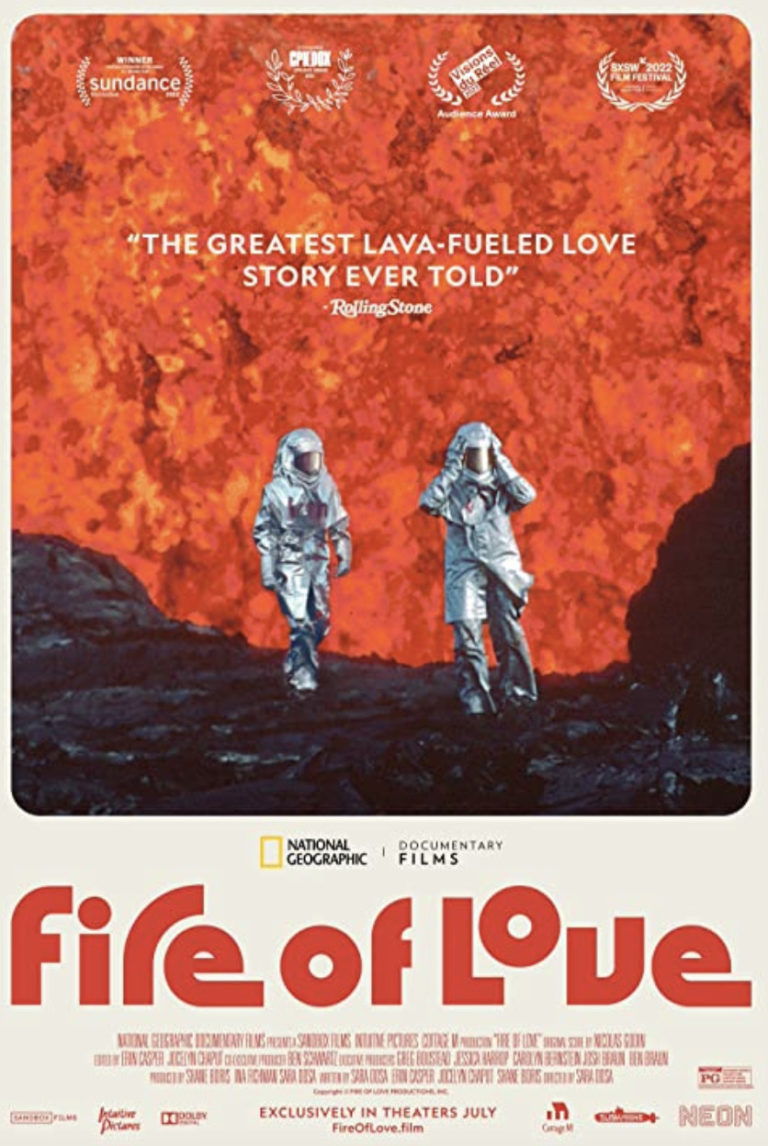
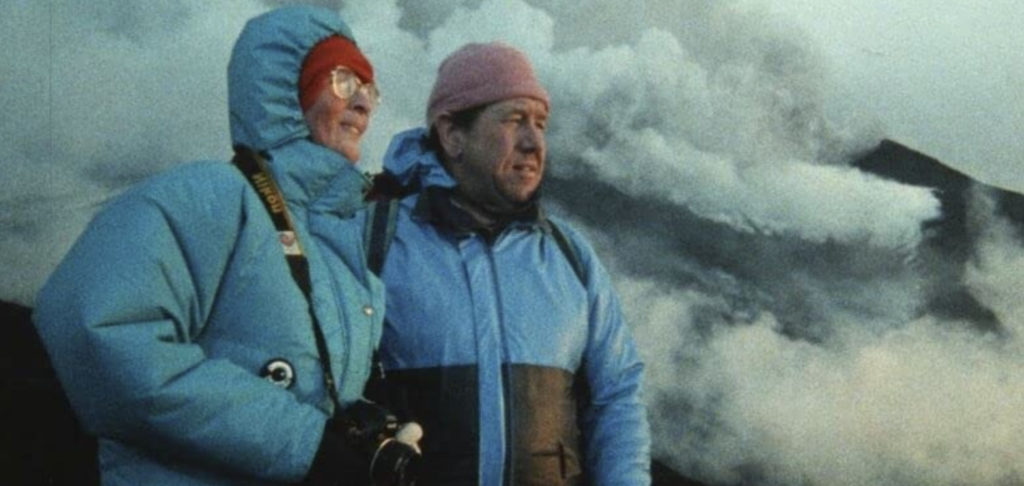
Q: How did you first meet Katia and Maurice Krafft?
SD: I first met Maurice, actually, when Erin and I were finishing the last film that we made— “The Seer and the Unseen.” It’s a verité documentary and takes place in Iceland, which is a volcanic island. We think of that film as a documentary that embraces the magically real form. Some people might think that that’s oxymoronic perhaps, but for us it’s a really exciting and creative endeavor.
Q: Isn’t it about people who believe they can communicate with fairies?
SD: We followed the story of an Icelandic woman who’s in touch with the spirits of nature which is quite a common belief there. We wanted to open that film with archival imagery of volcanoes that really showcase how Iceland is a land in the making — a place of creation and destruction, like everywhere in the world. But it’s so palpably felt in Iceland due to the volcanic activity. So we started researching volcano archives, and that’s how we came across Katia and Maurice. Not that many people had filmed erupting volcanoes in Iceland specifically in the ’70s and ’80s, which was the [setting] we were looking for. We immediately recognized their footage as gorgeous and staggering, but once we really learned about them as people, I thought, “Okay, there’s a film here. They’re so philosophical, so faithful. They were in love with each other and the earth. They got us really excited to [tell their story].
Q: What was the process of getting access to their archive and the archival material about them — on talk shows, etc. — which was a way to see their personalities as well?
SD: Their archive consists of hundreds of hours of 16-millimeter footage that they shot and thousands of photographs. I collected a trove of volcano illustrations, actually dating back, I think, to the 14th or 15th century. All types of other volcano paraphernalia was around. That’s changed hands over the years after they passed away. But Maurice’s older brother, Bertrand, has largely been the steward of this. When we began the project, the footage and photographs resided in an archival facility in Nancy, France, not far from where they grew up. It was being looked after by a place called Image’Est. They were wonderful to work with. One of our producers, Ina Fichman, called them up and explained our project, striking an agreement with them to digitize their entire collection.
This is the first time their collection was digitized, which was really exciting to us. Bertrand also had to approve our approach to the collection, [and] he was very happy with it. It was great to have the Krafft family itself on board. We started making the film in the summer of 2020, so we were all experiencing the lockdown. We wanted to ask [Image’Est] to scan the footage, 20 hours at a time, and then they would send it to us to watch. It was extraordinary to be transported through this gorgeous imagery as we were stuck at home.
Q: What was the process of getting to know Maurice and Katia? You talk about them as if you know them, and obviously you never got the chance to, but it really comes through in the film. So beyond watching the footage, how did you start to understand them?
SD: It was challenging, because most of the films that I’ve worked on — especially the films I’ve directed — have been observational films, and had a deep and collaborative relationship with the people in them. The same thing too with Erin, and Jocelyne, our other editor, and our pre-scene team. So the fact that we were working with subjects who passed away 30 years before we ever began the project, there’s unrequitedness there. We’d love to speak with them.
Q: Have you tried to adopt some of their methodologies of observational filmmaking to the process in order to get to know them?
SD: The really hard part of that is the process of deep listening. Of course that meant listening to whatever recordings we could get our hands on. It meant reading the nearly 20 books they authored. We conducted a lot of interviews with people who worked with them such as family members like Bertrand. We were so hungry to learn as deeply as we could. We’re still asked about showing who they are in all their media so you could discern their personalities. There’s tons of things, of course, that don’t show up in the film. But there are poems that they wrote in some of their books that were so hyperbolic and so almost braggadocious that show their profound love for volcanoes and also for each other. Things like that really allowed us to understand who they were, who they are — I like to talk about them in present tense.
I could go on and on. We definitely captured, though, this feeling of the more we learn about them, the more, of course, we realized we could never know. And in a very small way, that seemed to me that their own journey in trying to understand volcanoes. The more they learned about volcanoes, the more they realized there’s this vast mystery that they can never, ever really perceive because of the limitations of being human amid this primordial geologic force. We tried to embrace the unknowns. We’re grateful for what we could know, and had to just live with that unrequitedness as part of this journey of understanding.
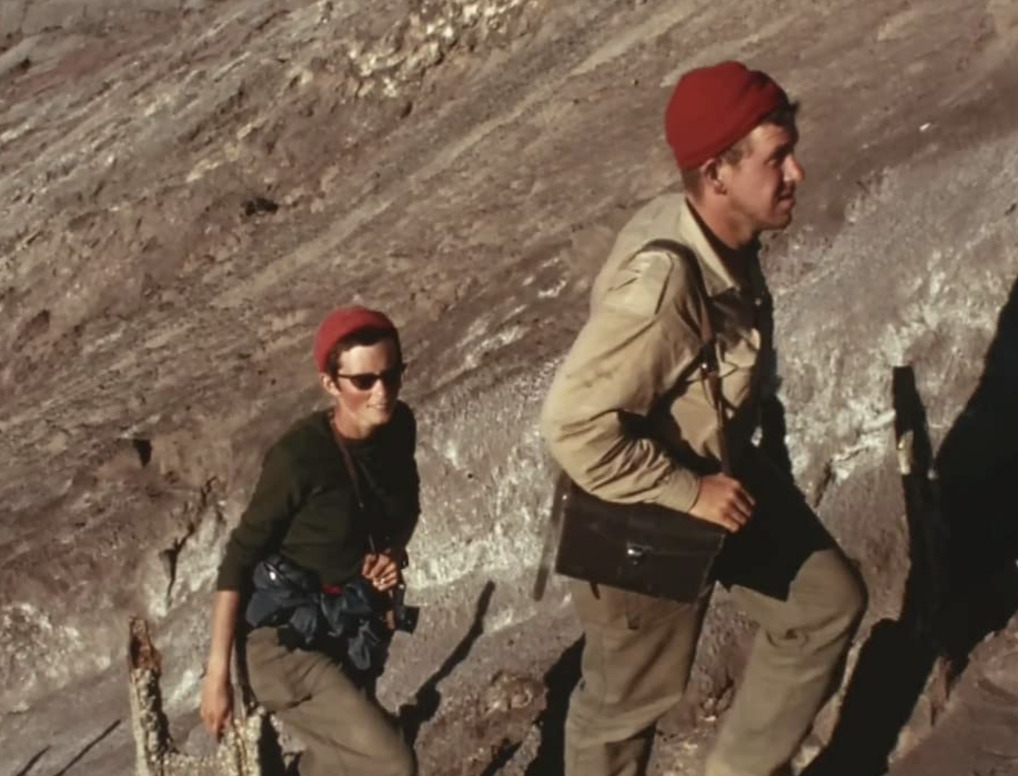
Q: How did you balance their scientific work and their path to learning about volcanoes, and their own love story?
SD: It was definitely a challenge to balance all these elements, and that’s why I’m so grateful for having these editors like Erin and Jocelyne. This is the third film Erin and I have made together, and Erin has joked at me. She’s teased me before about how I can be a maximalist. That’s why I am particularly grateful for editors who are so precise. But, there’s a lot of things we were excited to play with in this film. Science, a love story, a lot of philosophy — specifically about existentialism — all coursing through the film. For us, those things found resonance in this idea of a journey towards understanding that which you can never quite know — and the meaning can come forth from that journey.
But the overarching narrative was that of a love story. And specifically a love triangle, that was something that Maurice actually gave us. At the very end of the film, there’s a quote where you hear Maurice say, “For me, Katia and volcanoes, it is a love story.” That’s a line from one of the books that he wrote. For us that was really the genesis for him. We thought he was giving us an emphasis on how to interpret their legacy. So we adopted that as our overarching structure, and put together an outline based on a classic love triangle story, actually influenced by French New Wave films. You’d think that they were really inspired by the French New Wave feel. Katia’s writing reminded us of Truffaut or Agnes Varda. It’s all inspired and they were very much affected by the cultural events and influences of their time. But that was really useful for us as when we were trying to come up with structure and devices, particularly how we are parsing through these various themes that we hoped to crystallize around ideas of scientific understanding and love as understanding.
Q: What did it take to write the screenplay? It does capture all those things, and it’s so beautiful and mystical in some ways, and very romantic as well. What was that process like?
SD: The writing of the narration was by far the hardest part of making “Fire of Love.” Once we started to realize we wanted to make this film, we didn’t actually want any narration for it. We hoped that the images and their audio recordings would speak for themselves. While they’re beautiful, they’re extremely limited. For example, the 16-millimeter footage that Katia and Maurice shot does not have any sound, so Erin and Jocelyne had to fill sounds in throughout the edits. The footage that did have sound with them appearing in front of other people’s cameras was often limited to very specific sound bytes — recording of certain eruptions, or their very witty but… their shtick. So we found out more about the depth of their relationship through their writings and interviews with other people.
But all the same, if we were going to tell a love story, we needed a different narrative vehicle in order to do that. Again, we looked to the French New Wave as inspiration for how to put together the film. We decided on narrations as a subjective, playful narrator as such a hallmark of that movement. But we wrote it very collaboratively. Erin, Jocelyne, and one of our producers, Shane Boris, and myself, it was very much done simultaneously with the edits. We do have funny [moments]… and we created their own little languages. A little bit of editing, a bit of writing… Then take away some of the editing, add more writing, then take away the writing. At first, the writing very much started off more as expositional scaffolding, and once the structure could hold, we realized we didn’t need so much. We were then paring down on the narration until the final day of our sound mix.
Q: What was the process of finding Miranda July to do it? Her voice and style doesn’t match them so completely.
SD: It’s mixed-purposing that we were really happy to hear. Miranda is an artist whose work I’ve loved for many, many years, since I saw “Me and You and Everyone We Know” [2005]. I thought she absorbed everything. She’s written, directed, acted. But we didn’t actually have her in mind at first. We were thinking we would probably want a French narrator for the film. But it was in our brainstorming process when one of our executive producers, Greg Boustead, mentioned her, and we were all, “Oh, my god, she would be perfect for that.” Much of that is about her voice, which we describe as an achievement of “deadpan” and “curious.” That was something we were hoping for. She does such an incredible job of communicating with this strange beauty of what it means to be in a relationship with one another, whether it’s a moment of meeting in a hallway, or it’s a lifetime relationship. She is so good at capturing those kinds of precarious desires that somehow many people find themselves relating to. We were thrilled to get to work with her.
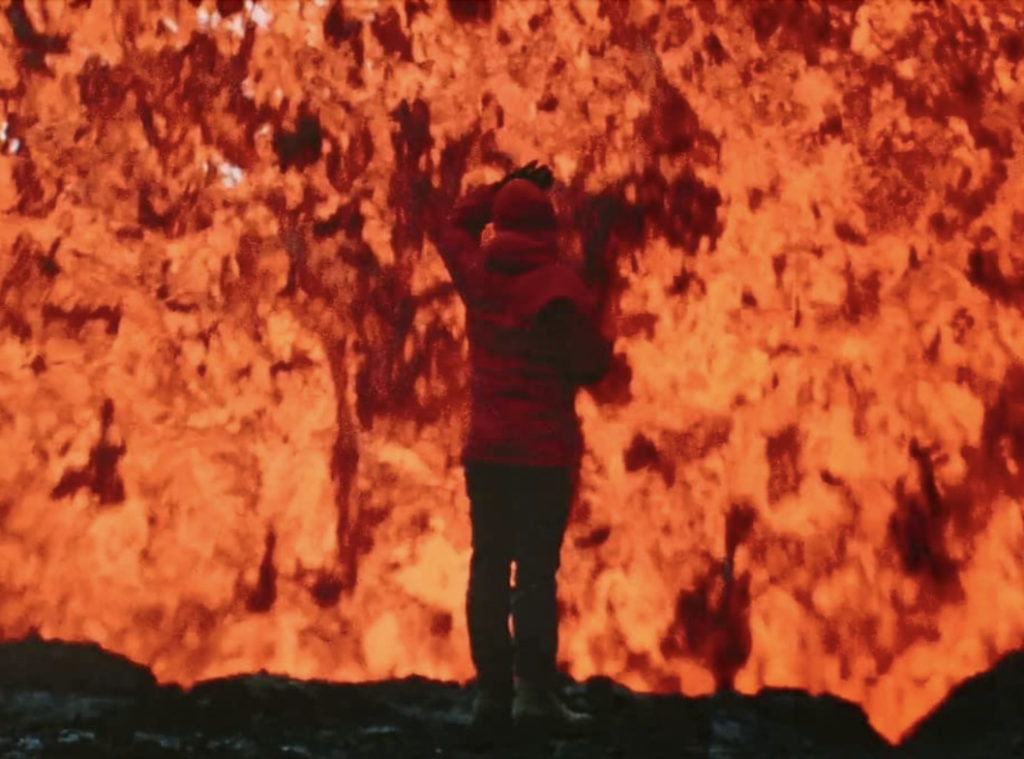
Q: What was the most surprising thing you found once you started looking through the material?
SD: We knew there’d be volcano footage but I think we were all taken aback by just how beguiling and beautiful it was — and how sentient that nature looked. With the first reel I ever got was the Mauna Loa eruption of 1984, and I remember thinking, “This gorgeous lava in front of me seems like a live being.” I kept writing that in my notes, “Use this shot! Oh, use this one! Use this one too!” That, in itself, was surprising, the power and beauty of it. How close they were to capturing that imagery. But then we were also taken aback by the slices of life woven throughout. Much of the footage was almost like it was chopped up. Erin and Jocelyne often said it was like a lot of that footage was thrown into a blender. Then there was other very short shots.
It was a very difficult task to parse out what was what. Luckily, we had their books to guide us and tell us what was what. But we would find these slivers of beautiful life amazing. There’s a strange poetic image of someone’s arm they held out and a raven coming to take something from their hand. There’s another of a mother lizard eating a dead animal for minutes. It tells us that there are images with meaning, and they were trying to capture beauty with their actual footage. That spoke about how they saw the world and the connection between things. There were all kinds of things, we’ll never know what they actually were but they still taught us a lot about Katia and Maurice.
Q: Talk about capturing the differences in their personalities and how you thought about the characterization of them onscreen?
SD: It’s important for us not to treat them as one singular unit, but rather to give them as much of their own character as possible, given the limitations of the archive and the fact that they’ve already passed away. They were both incredibly bold. There’s no question about their courage. Maurice seemed a bit more animated by the potential of danger. He would truly try to get so, so close. Katia would get close if it brought her a deeper sense of understanding, if there was a purpose and intention behind it. It’s not something that especially came through in the interviews that we were doing with their loved ones and collaborators. It was important for us to use the footage so we could tease that tension out, and the acid-like scenes [are] examples of it. They could always find ways to reconcile because they knew that without each other, they couldn’t pursue their transcendent love of volcanoes. That’s where the great volcanoes, this grand, destructive dangerous force, really came in later in the film.
Q: There’s one scene which shows their personality. In the latter half of the film, you’re also dealing with this tragedy — not just their personal tragedy, but all of these eruptions. How did you balance out the personal tragedy with the [volcanic] tragedy?
SD: I spent a lot of time thinking about the gravity of what they encountered throughout their entire life. It was especially crystallizing in their later years around their research with great volcanoes. They began in their youth trying to escape humanity because they understood the “human world” as a separate world where humans were destroying what they created. The world of volcanoes was the realm of creation, a cycle of creation and destruction. They idealistically went towards that. Later on in their lives — this is somewhat speculation and interpretation based on our research — it seemed that they understood that there’s no separation between humans and nature. Humans are nature, nature and humans are part of the same interconnected world.
They understood the devastation that can happen to human life at the hands of their beloved volcano. That, of course, became devastatingly true in 1985 with the eruption of Nevado del Ruiz in Colombia. They understood that this destructive love of volcanoes put them in conflict with themselves as humans. But that’s where they decided to dedicate their lives — towards being mediators between humans and volcanoes, trying to communicate to others how to understand the forces of the earth, and how to listen to scientists — which remains a tremendous challenge — in order to create a world where volcanoes can no longer “yell”, so to speak. So much of that was catalyzed through their pursuit of great volcanoes.
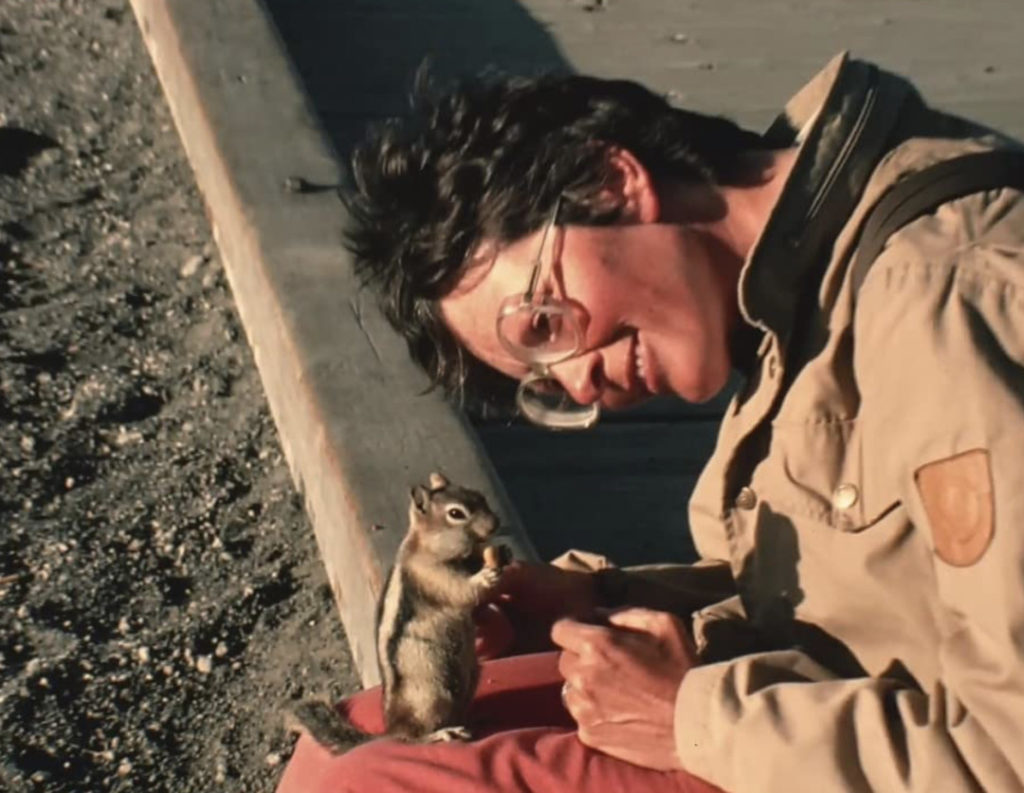
Q: The clips didn’t have much sound, so what was the process of putting together the sounds?
SD: My editors, Erin and Jocelyne, really deserve so much praise for their extraordinary work, not just on edit but endless hours. It was truly a tremendous amount of work. At first we thought maybe we could edit just with pictures because we knew that editing with sound was going to be so difficult. We started out putting text on screen, like “car honk here”. But sound plays such an integral role in developing not just the story but also the character of volcanoes as these sentient, alive beings.
Erin and Jocelyne began doing incredible research using volcano libraries — which do exist! — and also being really creative with other sound effects to create the sonic landscape that we needed in order to tell the story. It was very realistic and true, and also scientifically accurate. With the 16-millimeter footage — they didn’t have sync-sound — it opened up a place for a certain creativity. Katia and Maurice had to think and talk about volcanoes as alive and they perceived them often as “monsters.” One example is a scene in 1979 in Tunisia. Katia and Maurice went to visit a volcano, and when Erin was editing that scene, she decided to weave in sound effects that were called “dinosaur” sounds. It was scientifically accurate explosions because that was Katia and Maurice’s own perception.
Q: What reaction have you had from the people you interviewed and from the connections to Katia and Maurice. How do you feel now that the film is out in the world and how that affects their relationship with Katia and Maurice?
SD: It will always be unrequited, quite honestly. But there’s something about all unrequited searches where if you really feel it deeply. You just want to keep going towards it. I’ve thought so much about seeing how people view them, love them and have embraced the film. For our French premiere, we had to premiere it at the Louvre. Bertrand, Maurice’s brother, did the introduction. Having that come together, and have their collaborators with us that night, it was so special. So many of them got to see images that they hadn’t seen for 30, 40 years, being projected large. They know now that they [their images] are traveling the world. That’s been deeply meaningful for us. On another level, this is an archival film and it has had surprises for us. There are more archives that are coming forth now. A man in Hawaii emailed me out of the blue saying, “I worked with them as a cinematographer back in the ’80s and here’s a ton of photographs that I have of them.” He sent them to me. I’ve been emailing a cinematographer that they worked with in Iceland. He was sharing his memories of working with them. So the archival process is growing and growing. It’s been wonderful to see how the film has catalyzed that further archival process. It’s been quite profound and touching, and I’m forever grateful to Katia and Maurice for opening up this dream for us.
Check out more of Nobuhiro’s articles.
Here’s the trailer of the film.

